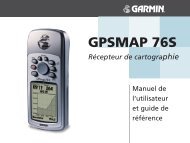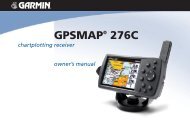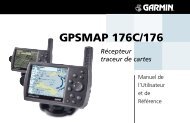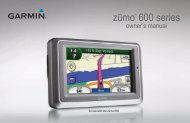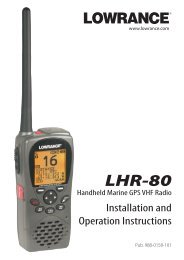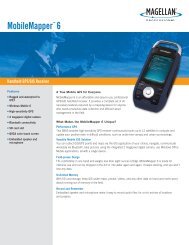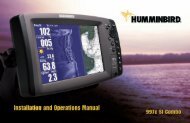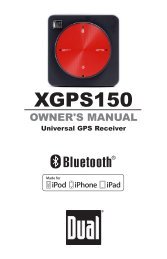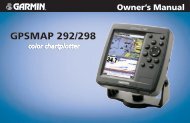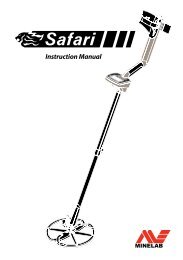X515C DF & X510C Manual - Lowrance
X515C DF & X510C Manual - Lowrance
X515C DF & X510C Manual - Lowrance
Create successful ePaper yourself
Turn your PDF publications into a flip-book with our unique Google optimized e-Paper software.
NOTE:<br />
If you want to change the sensitivity in <strong>Manual</strong> Mode, first turn off<br />
Auto Sensitivity: from the Sonar Page, press MENU|↓ to AUTO SENSI-<br />
TIVITY|ENT|↑ to SENSITIVITY|ENT. Press ↓ or ↑ to pick a different sensitivity<br />
setting. When it's set at the desired level, press EXIT.<br />
Important Tip:<br />
While you are experimenting and learning, it's possible to scramble<br />
the settings so that the sonar picture disappears from your screen.<br />
If that happens, remember that it's easy to switch back to full<br />
automatic operation by simply restoring the factory auto settings.<br />
Here's how:<br />
To Restore Factory Settings<br />
1. Press MENU|MENU|↓ to RESET OPTIONS|ENT.<br />
2. The unit asks if you want to reset all the options. Press ← to<br />
YES|ENT. All options are reset, and the unit reverts back to the<br />
original settings.<br />
Fish Symbols vs. Full Sonar Chart<br />
You may have noticed in the quick reference that we used fish arches<br />
in full sonar chart mode for our example, and not the popular Fish<br />
I.D. fish symbol feature. Here's why.<br />
Fish I.D. is an easier way for a sonar novice to recognize a fishy signal<br />
return when he sees it. However, locating fish by symbol only has some<br />
limitations.<br />
Your sonar unit's microprocessor is remarkably powerful, but it can be<br />
fooled. Some of the echoes calculated to be fish could be tree limbs or<br />
turtles! To see what's under your boat in maximum detail, we recommend<br />
you turn off Fish I.D. and begin learning to interpret fish arches.<br />
Fish I.D. is most handy when you're in another part of the boat or performing<br />
some task that prevents you from watching the sonar screen.<br />
Then, you can turn on Fish I.D. and the audible fish alarm. When that<br />
lunker swims under your boat, you'll hear it!<br />
Fish I.D. can also be useful when you want to screen out some of the<br />
sonar detail gathered by your unit. For example, in one case fishermen<br />
in San Francisco Bay saw clouds of clutter in the water but no fish<br />
arches. When a down rigger was pulled up, it brought up several small<br />
jellyfish. The fishermen switched their <strong>Lowrance</strong> sonar to Fish I.D.,<br />
which screened out the schools of jellyfish and clearly showed the game<br />
fish there as fish symbols.<br />
46



